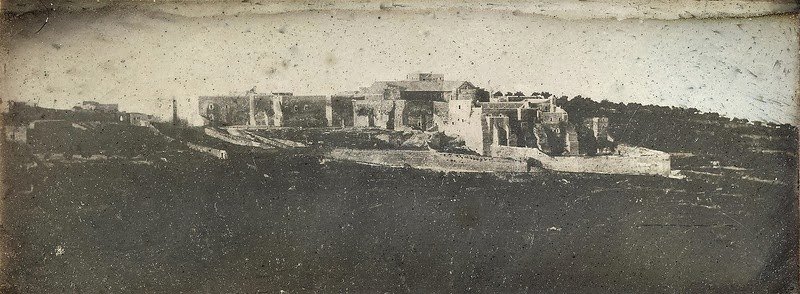These first photos of Jerusalem were taken in 1844 by the French photographer and painter Joseph-Philibert Girault de Prangey (1804-1892), who was active in the Middle East. In 1844, Jerusalem was a small city with a population of 15,000 people on the outskirts of the Ottoman Empire. Remarkably, his photos were not discovered until the 1920s in a storage owned by him and only became well-known after eighty years.

Joseph-Philibert Girault de Prangey, in the year 1840
Girault de Prangey studied painting in Paris at the École des Beaux-Arts and in 1841 learned the daguerreotype process, possibly from Louis Daguerre himself or from Hippolyte Bayard. Girault de Prangey had a keen interest in the architecture of the Middle East and embarked on a tour of Italy and Eastern Mediterranean countries between 1841 and 1844, producing over 900 daguerreotypes of architectural views, landscapes, and portraits.






